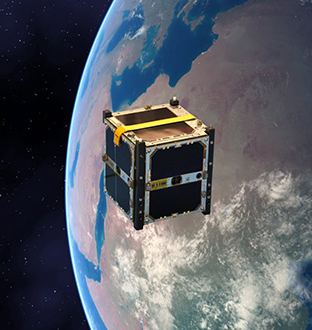Little boxes set to face space
 Three tiny Australian satellites will soon make their space debut.
Three tiny Australian satellites will soon make their space debut.
The locally-designed research satellites will soon be on their way to the International Space Station, where they will be deployed into orbit to explore the thermosphere - a little-understood region above Earth.
The trio is part of an international mission known as QB50, which will see a swarm of 50 small satellites – “cubesats” that weigh about two kilos each – carry out the most extensive measurements ever undertaken of the region between 200 and 380 km above Earth.
The thermosphere is vital for communications, weather formation and helps shield Earth from cosmic rays and solar radiation.
This region is the interface between our planet and space, and is where much of the ultraviolet and X-ray radiation from the Sun collides with the Earth. These interactions can generate auroras and potential hazards that can affect power grids and communications
The Australian cubesats are;
University of NSW’s UNSW-Ec0, which will study the atomic composition of the thermosphere
University of Sydney, UNSW and the Australian National University’s INSPIRE-2, a joint project which will measure the electron temperature and density of plasma in the region
University of Adelaide and the University of South Australia’s SUSat.
They are the first Australian satellites to be deployed from the International Space Station.
All three satellites, along with 37 other QB50 cubesats, will be sent up to the International Space Station on December 30 2016 by an Orbital ATK Antares rocket from Wallops Island, Virginia, inside a Cygnus cargo freighter.
The cubesats will be deployed from the ISS between about a month after arrival, drifting down from the ISS’s orbit of 380 km toward the target region.
Experts say it is the most extensive exploration of the lower thermosphere ever, and will collect measurements in the kind of detail never before tried.
The satellites will operate for 3-9 months before their orbits decay and they burn up in the atmosphere.
Each cubesat also carries other instruments with its own engineering and scientific goals.
UNSW-Ec0, for example, has three other experiments: a robust computer chip designed to avoid crashing in the harsh radiation of space, as some satellites and space probes are forced to do when hit by cosmic rays; a space-borne GPS to allow satellites to cluster together in swarms; and test a super-reliable computer microkernel in the harsh radiation of space.








 Print
Print